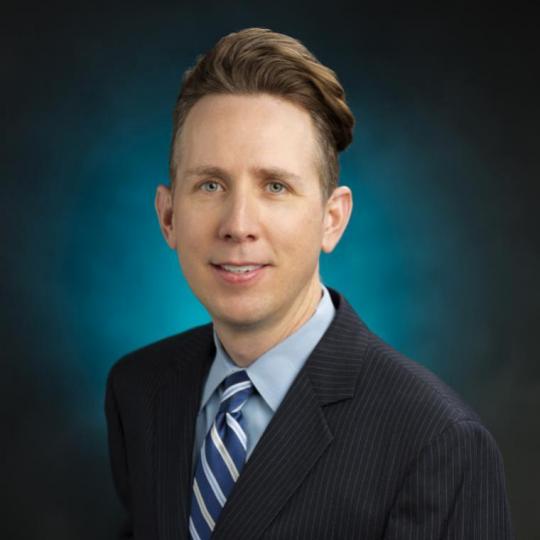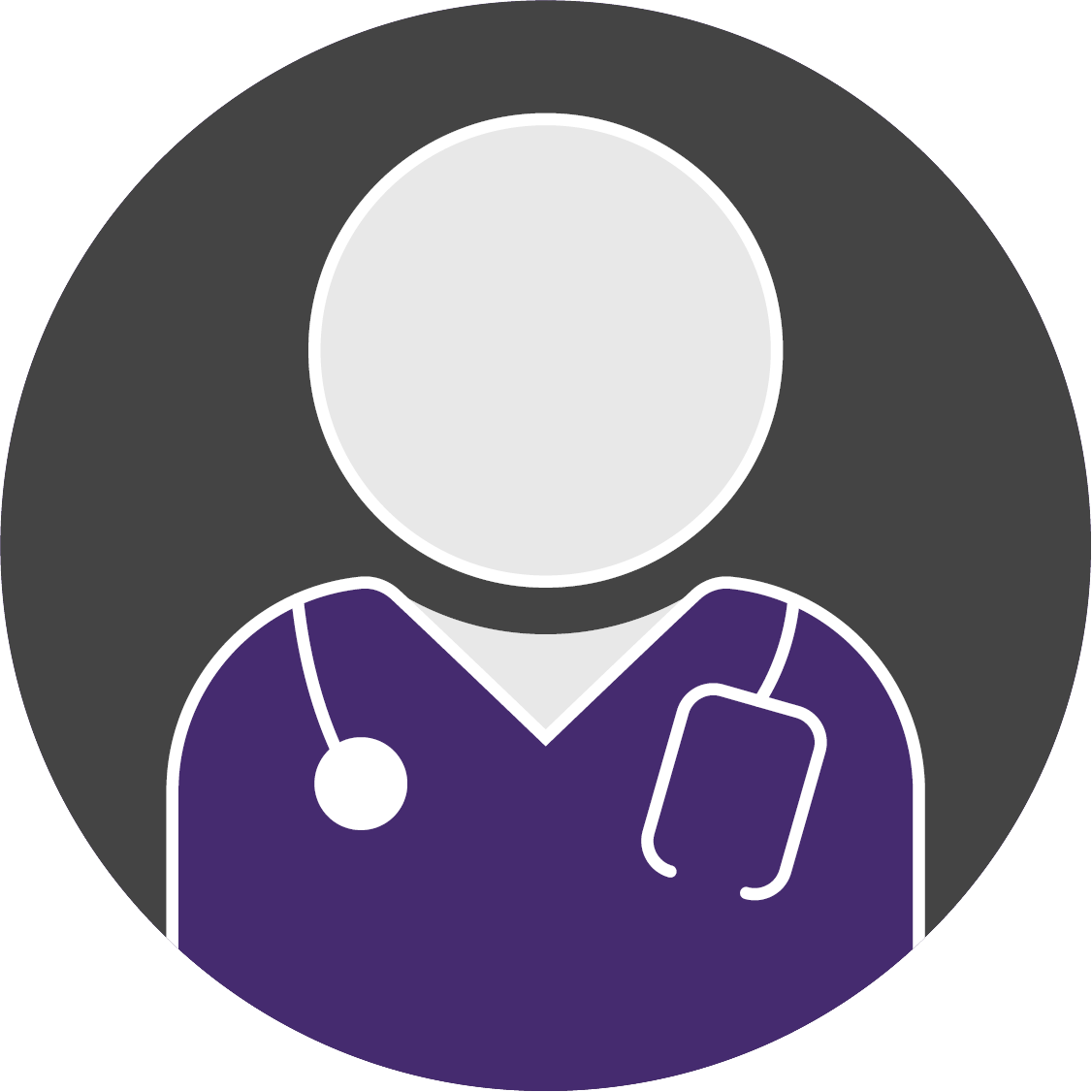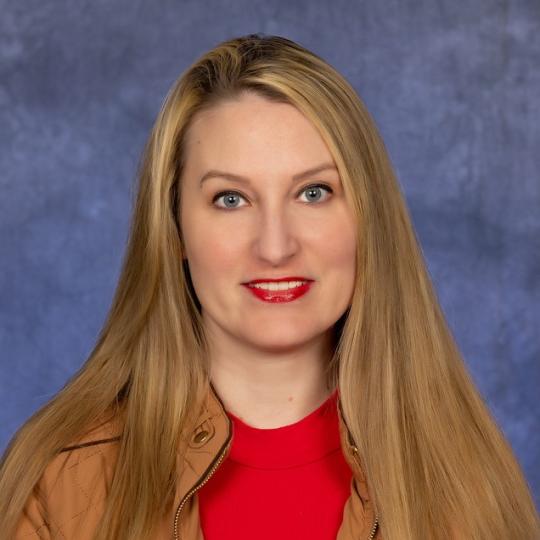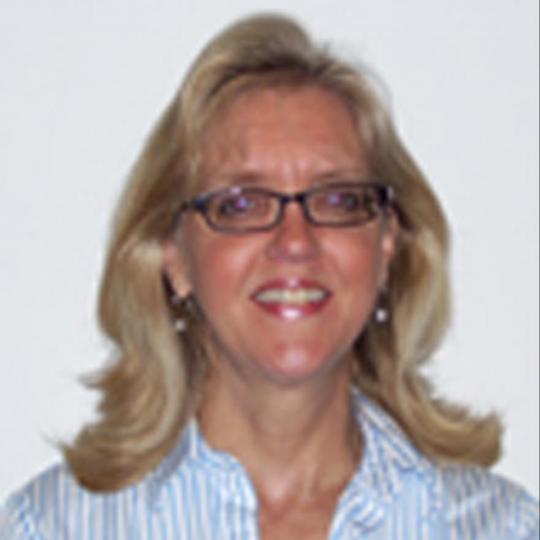Doctoring
Welcome
The Doctoring Curriculum is both an orientation to Year 2 and a continuation of the four-year Doctoring Streamer that began in Year 1. The introduction provides background information that will be built on through the cases, resource sessions, and clinical experiences in the four Year 2 units (Hematology, Immunology & Infection; Cardiovascular, Renal & Respiratory; Neuromuscular and Behavior; and Endocrinology, Reproduction, and Gastrointestinal). The streamer continues its focus on the Doctoring cornerstones: Clinical Skills, Geriatrics, Medical Humanities (including the ethical and legal aspects of medicine), and Physicians' Attitudes and Conduct (PAC).
The Doctoring Streamer runs through all four years of medical school and provides opportunities for students to acquire clinical skills via a documented system of procedures, skills, and clinical experiences. Doctoring activities include peer and self-assessment skill-building, physician attitude and conduct sessions (PACs), clinical skills development, and medical humanities issues (including physician/patient relationship, ethics, death and dying, and practice management).
Students are assigned to physician mentors in years one and two who work with them as they develop and build their clinical skills. In each of these years, students usually work with the same mentor for the entire academic year. In addition, first year students are mentored by third year student sand second-year students are mentored by fourth-year students as part of the Doctoring Curriculum requirements.
In addition to the geriatric concepts integrated into the curriculum, special initiatives based on the program “Aging Across the Curriculum” have been developed to address significant issues germane to the older patient population. Through experiences with older standardized patients, interactive sessions, and small group discussions, students address a myriad of topics critical for providing proficient health care services to an aging population and developing caring attitudes needed to competently and compassionately care for this burgeoning older population.
Medical Documentation and Presentation Skills
Student will:
- Demonstrate the ability to fully document a Comprehensive History and Physical (H&P) Examination on one patient each academic unit, according to the Gold Standard for Comprehensive History and Physical Exam and Screening Head-To-Toe Physical Examination.
- Demonstrate the ability to relay relevant data about a patient via Oral Case Presentations, one per academic unit, using the cases of the patients written up in the Comprehensive H&P.
- Demonstrate the ability to develop an appropriate Problem List.
Physical Exam Skills
Student will:
- Demonstrate competency in the performance of the elements of the Comprehensive Screening Physical Exam as listed/discussed in the Gold Standard for Comprehensive History and Physical Exam and Screening Head-To-Toe Physical Exam.
- Apply basic anatomy and physiology knowledge to the physical exam.
- Demonstrate universal precautions during patient and SP encounters.
- Demonstrate appropriate use of exam room equipment (e.g., stethoscope, otoscope, ophthalmoscope, sphygmomanometer, reflex hammer, tuning fork, etc.).
Clinical Reasoning Skills
Student will:
- Apply basic pathophysiology and understand of cardinal manifestations of disease in formulating a differential diagnoses list.
- For each condition, demonstrate an understanding of the clinical definition, the history, physical exam, and ancillary (if necessary) findings required to make the diagnosis of the disease.
- Use targeted questions and physical exams to narrow the differential diagnosis.
- Provide a reasonable (4-6 items) differential diagnosis for the common chief complaints that arise during the academic units.
- Understand the role that prevalence plays in formulating a reasonable differential diagnosis.
- Demonstrate ability to research current medical literature to ensure the differential diagnoses and definitions of conditions are according to current evidence-based guidelines.
Professionalism and Patient/Physician Relationship
Student will:
- Adhere to SIU guidelines on Dress and Decorum in the clinical setting and PDL.
- Maintain a professional environment by respecting patient modesty and boundaries, use of appropriate draping, and non-intrusive note taking.
- Demonstrate empathy, compassion, and cultural sensitivity during patient encounters and interactions with other health care professionals (nurses, clerks, etc.).
- Respect the patient's rights and privacy and maintain the confidentiality of patient information.
Integrated Medical Interview
Patient-Centered Interviewing
Student will:
- Demonstrate communication techniques to enhance the physician-patient relationship and elicit the patient story (e.g., active listening, body language, open-ended questions, avoiding medical jargon, non-judgmental atmosphere, showing empathy, showing interest in and understanding of the patient story).
- Explore the meaning of illness to the patient.
Clinician-Centered Interviewing
Student will:
- Demonstrate full exploration of the chief complaint (onset, duration, location, character, relieving and exacerbating factors, etc.).
- Demonstrate other components of comprehensive medical history-taking including past medical history, sexual history, family medical history, social history, financial history, and review of systems.
- Obtain information from other sources (e.g., family, significant others, medical records).
- Provide smooth closure to the patient encounter.
- Understand the intricacies that patients may face when navigating the health care system, including the hardship of paying for health care.
Physician-Self Care and Personal Development
Student will:
- Demonstrate life balance and recognize personal limits.
- Engage in wellness behavior and model a healthy lifestyle.
- Identify techniques to identify and manage personal stress.
Societal Context of the Practice of Medicine (and Preventative Medicine)
Student will:
- Demonstrate an understanding of human growth and development.
- Recognize healthy lifestyle choices in preventing illness and disease.
- Explore human sexuality and risk factors for sexually transmitted infections.
- Demonstrate an appreciation of the roles of other health care providers.
Complementary Alternative Medicine
Student will:
- Demonstrate how to elicit a history from a patient about their use of these therapies.
- Demonstrate understanding and respect of cultural/ethnic influences on health beliefs and health care choices.
- Develop the ability to inquire into patients’ use of these therapies in a non-threatening, non-judgmental manner.
Medical Documentation and Presentation Skills
Student will:
- Demonstrate the ability to document at least four (max seven) Comprehensive History and Physical Examinations during the second year, six Clinic Notes and one Hospital Progress Note according to the Gold Standard for Comprehensive History and Physical Exam and Screening Head-To-Toe Physical Examination.
- Demonstrate the ability to relay relevant data about a patient via oral case presentations tailored to the audience and the clinical setting.
- Demonstrate proper use of EHR during patient encounters and in HPI and SOAP note construction.
- Demonstrate the ability to develop an appropriate problem list in all patient notes.
- Demonstrate proper prescription writing and basic order writing.
Physical exam skills
Student will:
- Demonstrate competency in the performance of the elements of the Comprehensive Screening Physical Exam as listed/discussed in the Screening Head-To-Toe Physical Exam with the addition of male and female genitourinary, rectal, and female pelvic and breast exams.
- Apply basic anatomy and physiology knowledge to the physical exam.
- Demonstrate an appropriately focused history and physical examination.
- Demonstrate universal precautions during patient and SP encounters.
- Demonstrate appropriate use of exam room equipment (e.g., stethoscope, otoscope, ophthalmoscope, sphygmomanometer, reflex hammer, tuning fork, monofilament, etc.).
- Demonstrate appropriate draping technique for applicable physical exams.
Basic clinical skills
Student will understand the theory behind and:
- Demonstrate safe patient transfers using proper body mechanics.
- Demonstrate proper technique when measuring blood pressure.
- Demonstrate proper administration of intramuscular, subcutaneous, and intradermal injections.
- Demonstrate proper sterile gloving procedure.
- Demonstrate proper insertion and removal of intravenous catheters.
- Demonstrate proper technique for venipuncture for blood collection.
- Demonstrate proper insertion and removal of urinary catheters.
- Demonstrate proper technique for suture and staple removal.
- Demonstrate proper technique for wound care and dressing changes.
- Demonstrate proper technique for collecting specimens (throat, nasopharyngeal, and wound).
- Demonstrate proper technique for nasogastric intubation.
- Demonstrate proper technique for hemoccult testing (during MGR practice).
- Demonstrate proper technique diabetic foot exam.
Clinical Reasoning Skills
Student will:
- Recognizing severity of illness and provide basic life support.
- Demonstrate clinical reasoning skills in formulating differential diagnoses and solving diagnostic problems using information gathered in the medical history and physical exam, epidemiology and pathophysiology knowledge, and the results of laboratory tests and diagnostic imaging.
- Recognize sensitivity and specificity of laboratory tests and diagnostic imaging.
- Demonstrate understanding of when laboratory tests and diagnostic imaging are indicated, not indicated and/or contraindicated.
- Demonstrate an understanding of the rationale for laboratory testing and diagnostic imaging.
- Demonstrate appropriate interpretation of results of laboratory tests and diagnostic imaging.
- Demonstrate ability to research current evidence-based literature.
Professionalism and Patient/Physician Relationship
Student will:
- Adhere to SIU guidelines on "Dress Code Guidelines" in the clinical setting and PDL.
- Maintain a professional environment by respecting patient modesty and boundaries, use of appropriate draping, use of chaperones, non-intrusive note taking and providing for family comfort/seating.
- Demonstrate empathy, compassion, and cultural sensitivity during patient encounters and interactions with other health care professionals (nurses, clerks, etc.).
- Explore potential conflict of interests with the health care industry encountered by health care professionals.
- Recognize how actions online may negatively affect one’s professional reputation among patients and colleagues and undermine public trust in the medical profession.
- Participate in mentor clinic, accepting responsibility for patient care (under supervision).
- Respect the patient's rights and privacy and maintain confidentiality of patient information.
Patient Centered Interviewing
Student will:
- Demonstrate communication techniques to enhance the physician-patient relationship and elicit the patient story (e.g., active listening, body language, open ended questions, avoiding medical jargon, non-judgmental atmosphere, showing empathy, showing interest in and understanding of the patient story).
- Explore the meaning of illness to the patient.
- Learn to identify and respond to patient empathy cues.
- Develop strategies for taking a medical history from individuals from different ethnic, racial, or cultural backgrounds, geriatric patients, patients with intellectual or physical disabilities, patients experiencing confusion or altered level of consciousness, hostile patients, pediatric patients, patients requiring an interpreter, and patients experiencing psychiatric conditions.
- Identify and respond effectively to patient nonverbal cues.
- Demonstrate sensitivity related to women’s and men’s health issues.
- Demonstrate sensitivity related to age-related health issues.
- Utilize practical approaches to delivering bad news.
- Recognize patient anxiety, stress, and depression and adjust interviewing techniques appropriately.
- Develop communication skills necessary for effective telehealth patient encounters.
Clinician Centered Interviewing
Student will:
- Determine and fully explore the nature of the patient’s chief complaint/condition and associated concerns.
- Demonstrate other components of comprehensive medical history-taking including past medical history, comprehensive genitoreproductive history, family medical history, social history, financial history, and review of systems.
- Demonstrate the ability to gather information from other sources (family, significant others, medical records).
- Demonstrate ability to prioritize elements of the history.
- Develop skills to pace patient encounters effectively.
- Learn to maintain control of the interview, redirecting conversation when appropriate.
- Develop de-escalation techniques for angry patients/families/significant others.
- Identify and minimize distractions that can negatively impact the patient encounter.
- Demonstrate proper interview closure including review and recap of the pertinent findings, eliciting patient questions, planning a management strategy with the patient, and utilizing teach-back technique to help verify understanding.
- Demonstrate how to access EHR records for critical information.
- Identify how to respond to patients who utilize the internet as a source of information about their symptoms and/or diseases.
- Explore bias against healthcare professionals and strategies to respond.
Physician self-care and Personal Development
Student will:
- Continue to develop work-life balance and recognize personal limits.
- Engage in wellness behavior and modeling a healthy lifestyle.
- Identify techniques to identify and manage personal stress.
Societal Context of the Practice of Medicine (and Preventative Medicine)
Student will:
- Recognize physicians’ role in eliminating health disparities through a better understanding of racial inequity and culturally sensitive medical care.
- Demonstrate an understanding of geriatrics medicine in today’s medical practice and effective communication strategies when caring for elderly patients.
- Explore the unique needs of individuals with intellectual and physical disabilities and the effects on accessible health care and preventative health behaviors.
- Demonstrate respect of individual patient’s views and wishes during palliative and end-of-life care within a complex health care delivery system.
- Demonstrate understanding of patient’s unique cultural and spiritual diversity while promoting a holistic approach to patient care at the end-of-life.
- Demonstrate therapeutic, professional communication skills when interacting with patients and their families regarding end-of-life issues.
- Describe the relationship between health literacy and the quality and safety of care.
- Discuss the legal, ethical and professional standards for medical decision-making in the treatment of adolescents.
- Recognize, provide interventions, and communicate effectively with patients experiencing intimate partner violence.
- Demonstrate an appreciation of the roles of other health care providers.
- Explore processes for analyzing and reporting errors in clinical practice and participate in root cause analysis.
- Demonstrate therapeutic communication skills when discussing medical errors with patients and families.
- Demonstrate an appreciation for the financial cost involved in laboratory testing and diagnostic imaging in today’s health care system.
A. Miscellaneous
- MS3 will serve as MS1 Mentor
- Discuss the Implications of aging as it pertains to risk for falls and maintaining independence in the community.
B. Medical Humanities Objectives
Overarching Goals
We draw from the wisdom and data of humanities fields such as philosophy, religion, anthropology, sociology and the arts. This knowledge is then incorporated into a comprehensive curriculum that will influence and enhance the humanistic awareness of SIU SOM students, a future generation of physicians.
We aim to create dialogue and stimulate reflection that aids in nurturing compassionate healers
We hope to assist doctors-in-training gain deeper insights into their own assumptions, beliefs and perspectives so they can hone their empathetic as well as medical expertise, thus creating more effective patient/physician relationships.
The Year 3 Medical Humanities Clerkship focuses on the physician as self and the physician-patient dyad.
Physician as Self Learning Objectives
- Reflect and discuss about self in community and self as community
- Reconnect with parts of your identity that may have been lost or dormant through your journey in medicine and/or carve out an identity that is separate but related to medicine
- Express what you are feeling in ways that enhance connection
- Grow interpersonal and communication skills and empathy through collaboration
- Develop a plan for thriving through a commitment to self-reflection, self-awareness, self-compassion, and self-care.
Physician-Patient Dyad Learning Objectives
- Learn about clinician/patient relationship models and how to apply them
- Learn about and how to employ moral theories to resolve clinical ethical dilemmas
- Learn how to identify ethical situations in medical practice and how to navigate and traverse through ethical scenarios commonly encountered in medical practice
- Discuss and begin to identify the impact of bias in medical practice
- Learn and improve bedside interactions with patients and families
Students will also create a project that reflects their understanding of how the humanities and medicine interact and impact them on a personal level.
Year 4 Medical Humanities Clerkship
Overarching Goals of Medical Humanities
We aim to create dialogue and stimulate reflection that aids in nurturing compassionate healers.
Our goal is to help doctors-in-training gain deeper insights into their own assumptions, beliefs and perspectives so they can hone their empathetic as well as medical expertise, thus creating more effective patient/physician relationships and improve healthcare and health.
To do this, we draw from the wisdom and data of humanities fields such as philosophy, religion, anthropology, sociology and the arts. This knowledge is then incorporated into a comprehensive curriculum that will influence and enhance the humanistic awareness of a future generation of health care providers.
We will build upon the foundations developed from your Year 3 experiences and expand the lens to focus on the roles, obligations, and challenges of physicians in the larger context of society.
Learning Objectives:
- Students will analyze and reflect on the role(s) of physicians in society.
- Students will demonstrate competence in ways that identify socially beneficial values and inspect the societal obligations and responsibilities of physicians.
- Students will investigate ways to address the Social and Political Determinants of Health, particularly as to how they impact their patients.
- Students will discuss ethical challenges that impact the practice of medicine, the profession of medicine, and members of the healthcare team.
- Students will examine the historical context of and the commitments physicians make with both the Hippocratic Oath and the Declaration of Geneva and discuss the impacts on patients, physicians, and the profession and will, as a class, construct a unique SIU class oath that reflects the professional values of the collective course participants as well as an individual oath
Professionalism
Student will:
- Recognize the following issues that could affect a patient's management and modify management as appropriate:
- Legal issues (e.g., informed consent, malpractice)
- Ethical issues (e.g., confidentiality, truth-telling)
- Conflict of values between the patient and the community
- Psychosocial issues
- Religious issues
- Cultural issues
- Project a professional image in manner, dress, grooming, speech, and interpersonal relationships that is consistent with the medical profession's accepted contemporary standards in the community.
Physician/patient relationship
Student will:
- Treat the patient as a person, not a disease; and understand that the patient is a person with values, goals, and concerns which must be respected and which may influence how the patient responds to his or her disease and its management.
- Respect the patient's rights and privacy and maintain confidentiality of patient information
- Interact with the patient in a way that will allow the patient to feel he/she has received medical care that was provided in a caring, compassionate, and humane manner.
Physician self-care and personal development
Student will:
- Behave in a self-motivated, responsible, reliable, and dependable manner.
- Demonstrate personal integrity, honesty, and self-discipline.
- Recognize personal limitations, whether they are intellectual, physical, or emotional, and work with or adapt to them.
- Demonstrate the professional and emotional maturity to take appropriate steps to resolve tensions and conflicts that occur among professional, personal, and family responsibilities, seeking professional help if necessary.
- Demonstrate the ability to think critically and exercise sound judgment.
- Provide patient care without allowing personal biases to interfere.
Complementary Alternative Medicine
- Knowledge
- Students will understand how to elicit a history from a patient about their use of these therapies.
- Students will understand how to search available medical resources to determine the safety and efficacy of such therapies.
- Attitudes
- Students will understand and respect cultural/ethnic influences on health beliefs and health care choices.
- Students will be able to discuss with patients their use of such therapies as a necessary part of finding a common ground when practicing patient-centered integrative medicine.
- Skills
- Students will develop the ability to inquire into patients' use of these therapies in a non-threatening, non-judgmental manner.
- Students will develop the ability to provide complete and balanced patient education to those patients inquiring about these complementary/alternative therapies.




